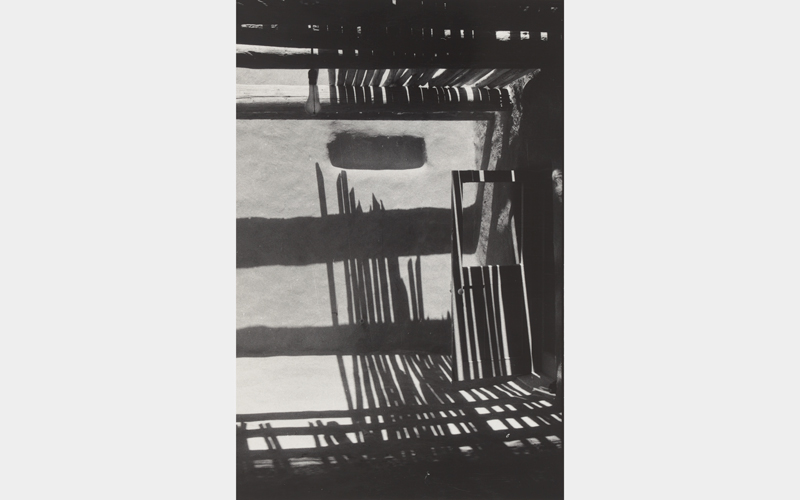
Georgia O’Keeffe (American, 1887–1986), Roofless Room, 1959–60, gelatin silver print, Georgia O’Keeffe Museum, Santa Fe, 2006.6.1428
14 3/4 × 11 3/4 × 1 3/8 in. (37.5 × 29.8 × 3.5 cm)
Verbal Description
Hello, my name is Nathaniel Stein, the museum’s curator of photography and curator overseeing the Cincinnati presentation of this exhibition. I will be reading the verbal description of Roofless Room in Georgia O’Keeffe, Photographer.
The photograph, Roofless Room, was created by Georgia O’Keeffe, an American artist who lived from 1887 to 1986. It is a gelatin silver print dating from between 1959 and 1960. It is in the collection of the Georgia O’Keeffe Museum in Santa Fe. The acquisition number is 2006.6.1428
Roofless Room measures 14 and three-quarter inches by 11 and three-quarter inches. It is a black-and-white portrait-oriented photograph. Shadows are evident throughout this image, creating thick and thin intersecting horizontal and vertical lines along a light-colored adobe wall and ground in front of the camera. The shadows are formed by the sun streaming through an irregular array of latillas (ceiling slats) and vigas (ceiling beams) that stretch the length of the image. An indentation in the adobe wall creates a softer rectangular shadow in the top third of the picture. A door with a large square window sits open on the right side of the photo.
Label Text
Hello, my name is Nathaniel Stein, the museum’s curator of photography and curator overseeing the Cincinnati presentation of this exhibition. I will be reading the verbal description for Roofless Room in Georgia O’Keeffe, Photographer.
The photograph, Roofless Room, was created by Georgia O’Keeffe, an American artist who lived from 1887 to 1986. It is a gelatin silver print dating from between 1959 and 1960. It is in the collection of the Georgia O’Keeffe Museum in Santa Fe. The acquisition number is 2006.6.1428
Streaked by morning shadows, O’Keeffe’s photographs of her "roofless room" at Abiquiú are stunning studies of the dimensional quality of shadows. As the sun’s position changed throughout the day, the shadows cast by the latillas (ceiling slats) crept down the walls and across the bare floor, reframing the scene. In each image, O’Keeffe uses these dramatic shadows to articulate the planes and angles of the room.
